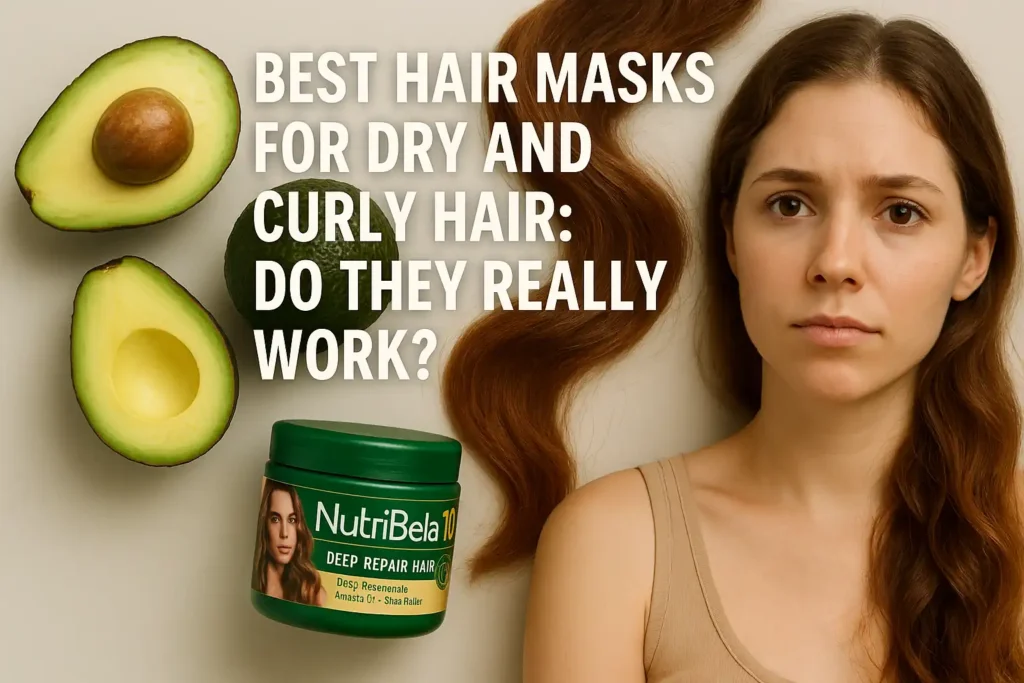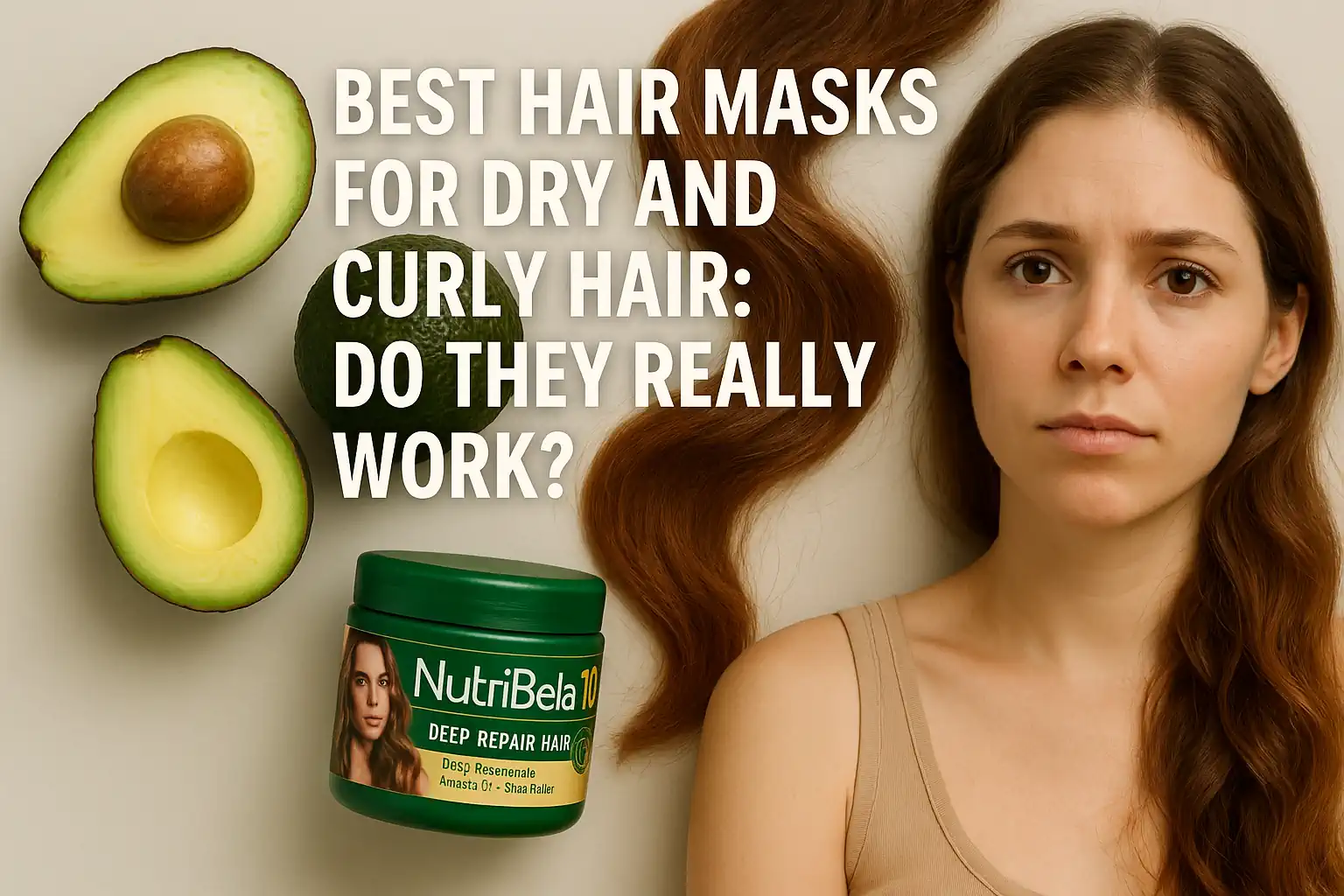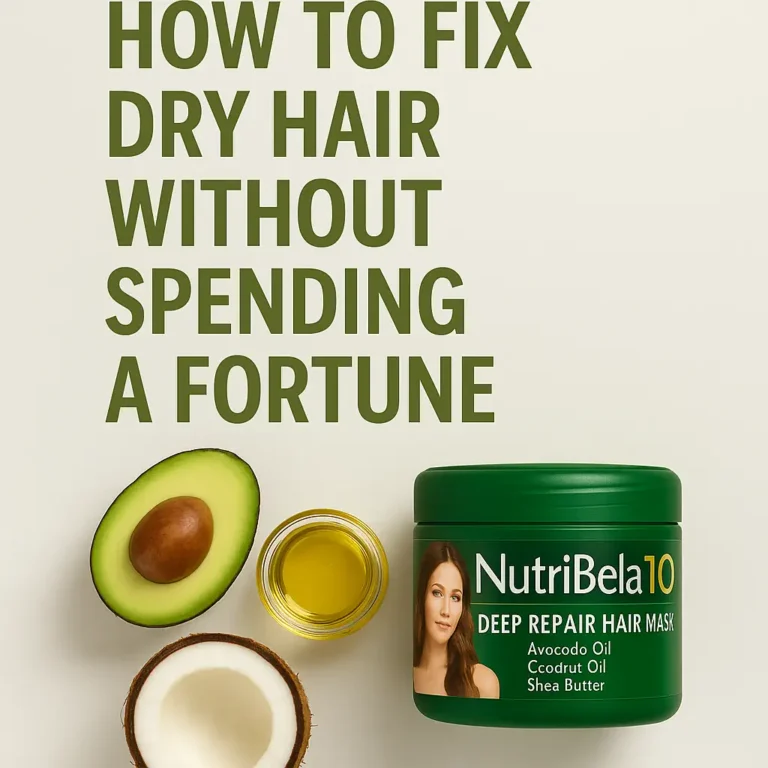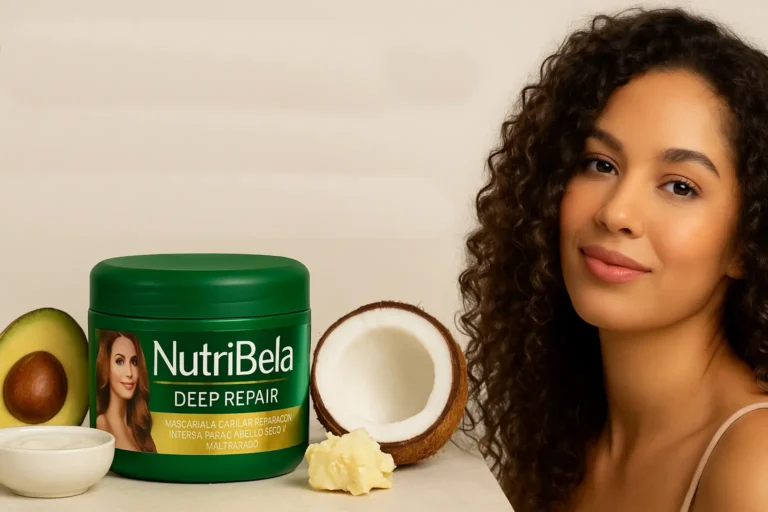Best Hair Masks for Dry and Curly Hair: Do They Really Work?
There’s a moment every curly-haired person knows too well: you walk past a mirror, tilt your head, and there it is — the halo of frizz, the dryness that makes every strand look like it’s fighting for independence. You’ve tried smoothing serums, coconut oil, even that “miracle” DIY yogurt concoction your aunt swears by. But the dryness keeps crawling back. That’s when the world of hair masks steps in, promising salvation in a jar. Bold claims, sure. But do they actually work? Or are they just another expensive tub of scented cream?

Why Dry and Curly Hair Struggles More Than Straight Hair
Let’s start with the obvious: curls are stunning. They bounce, they frame the face, they carry personality. But the very shape that makes curly hair so striking is also what makes it more fragile. Imagine water trying to run down a winding mountain road versus a straight highway. That’s how natural oils from the scalp travel. For straight hair, sebum slides easily down the shaft. For curls, every twist and bend slows it down, leaving the lengths thirsty.
Add in heat styling, dye jobs, air pollution, or just living in a city where the air feels like a dry October furnace — and suddenly dryness becomes a permanent house guest. That’s why the search for the best hair mask for dry hair is not just vanity; it’s survival.
What a Hair Mask Actually Does (When It’s Worth Its Salt)
A true hair mask is not just a thicker conditioner. Conditioners smooth the cuticle, sure, but masks are built to go deeper. They’re packed with concentrated ingredients — oils, proteins, humectants — designed to penetrate beyond the surface and patch up the damage.
The good ones don’t just make your hair feel silky for a few hours. They repair micro-cracks in the cuticle, strengthen weak spots, and lock in moisture so your hair doesn’t drink it all up and then dry out again by evening.
The not-so-good ones? They give you that fake gloss right after rinsing, but by day two your hair feels like straw again. You’ve probably been there.
Dry Hair vs. Frizz: Same Enemy, Different Face
Here’s where people often get confused: dryness and frizz are cousins, not twins. Dry hair lacks moisture. Frizz happens when the cuticle is raised, letting in humidity and breaking the smooth surface. But they feed off each other. Dry hair is more prone to frizz. Frizz makes hair look drier. That’s why the hunt for the best mask for frizzy hair usually overlaps with masks for dry hair.
So, when you hear “curly hair mask,” it should mean: high-moisture, frizz-taming, protein-balanced, and heavy enough to coat curls without weighing them down into limp spirals. Not an easy formula to get right.
Do They Work? The Honest Answer
Yes — when you pick the right one and use it consistently. I’ve seen it. Friends who fried their hair with bleach sessions came back after two months of disciplined mask use looking like they’d swapped wigs. But here’s the kicker: not all masks deliver that transformation. And results don’t happen overnight. One Sunday pampering won’t reverse three years of flat-iron abuse. Think of it as rehab — slow, steady, cumulative.
Deep Repair Hair Mask: A Case in Point
Take the Deep Repair Hair Mask from Nutribela. It’s one of those products built specifically with curly and dry hair in mind. Why? Because it stacks the deck with the heavy hitters: avocado oil, argan oil, keratin, coconut oil, shea butter. Each plays a role. Avocado oil penetrates deeper than most oils, keratin reinforces the protein backbone, shea butter coats and seals. This isn’t marketing fluff — these are ingredients with real track records in professional treatments.
The difference shows after a few weeks. Curls that once refused to clump suddenly define themselves. That straw-like crunch after a blow-dry? Softer, bendable. And yes, the frizz halo starts shrinking. Not gone forever — let’s be real — but noticeably less wild.
How to Actually Use a Hair Mask (Beyond the Label)
Here’s where most people mess up: slapping on a mask for three minutes in the shower and expecting miracles. Masks need time. Fifteen, twenty minutes minimum. If your hair is thick or especially parched, wrap it in a warm towel — heat opens the cuticle, letting the ingredients sink in.
Another trick? Apply on towel-dried hair, not sopping wet. Too much water dilutes the formula. And don’t forget the ends. That’s where damage camps out.
Frequency matters too. Once a week is enough for most. If your hair is a battlefield — daily heat styling, constant coloring — twice a week for the first month can kick-start recovery.
Table: Hair Mask Ingredients That Matter
| Ingredient | What It Does | Why It Matters for Dry/Curly Hair |
|---|---|---|
| Avocado Oil | Deep penetration, nutrient-rich hydration | Softens stiff curls |
| Argan Oil | High in vitamin E, smooths cuticle | Reduces frizz, adds shine |
| Shea Butter | Heavy emollient, seals in moisture | Prevents dryness from returning |
| Keratin | Protein rebuilds weak strands | Restores strength, reduces breakage |
| Hyaluronic Acid | Humectant, pulls water into the strand | Boosts elasticity, combats brittleness |
When you start looking at ingredients like avocado oil, keratin, or shea butter, you realize not every mask is built the same. Some are designed for routine dryness, while others tackle more serious, over-processed damage.
If your hair falls into that second category — bleached ends, repeated straightening, color on color — then an Intensive Hair Repair Treatment can sometimes deliver what a simple hair mask for dry hair can’t. It’s stronger, heavier, and made for hair that’s been pushed a little too far.
And if you’ve ever wondered why brittle hair happens in the first place, I’d suggest checking out this deep-dive article: Brittle Hair: Why It Happens and How Nutribela Can Bring It Back to Life. It unpacks the root causes, so you’re not just treating the surface but actually fixing the cycle.
The Emotional Side of Hair Care
People often treat hair masks like pure cosmetics, but for those with curly or chronically dry hair, it’s not just about looks. It’s about control. Walking into a meeting or stepping onto a dance floor knowing your curls won’t betray you halfway through the night — that’s confidence. And honestly, it’s mental relief.
Ask anyone who’s fought with frizz on a humid August afternoon: sometimes it feels less like hair and more like a battle zone. A mask that tames that chaos gives more than shine. It gives peace of mind.
The Pitfalls: When Masks Don’t Work
Not every failure is the product’s fault. Sometimes it’s how we use it. Common mistakes:
- Overloading with protein masks until the hair goes stiff like straw.
- Using masks too often and weighing curls down.
- Expecting a $3 generic drugstore tub to perform like a salon-grade formula.
The reality? A curly hair mask works best when paired with an overall routine — gentle shampoo, conditioner, and minimal heat styling. Masks aren’t magic wands. They’re one tool in the arsenal.
My Take: Worth It, If You Commit
So, do hair masks for dry and curly hair work? Absolutely — when you pick one tailored to your hair’s needs, and when you give it the patience it deserves. If your hair is screaming for hydration, a formula like Nutribela’s Deep Repair Hair Mask is more than indulgence. It’s rescue work.
Will it turn your hair into a glossy shampoo-commercial mane overnight? No. But stick with it, and three months down the line you’ll catch yourself in the mirror and pause. Not to scold the frizz. To admire the curl definition, the softness, the way your hair finally feels like it’s yours again.
Final Word
If you’re debating whether a hair mask for dry hair or a curly hair mask is just another marketing ploy — try living without one for a season. Then bring in the right mask, give it time, and compare the before and after. Sometimes the proof isn’t in the science or the claims. It’s in the moment you run your hands through your hair and realize: it doesn’t fight back anymore.

Hi, I’m Elena – editor, writer, and unapologetic haircare enthusiast here at NutribelaBeauty.
I’ve spent over a decade diving deep into what makes hair healthy, happy, and resilient — and I believe in products that nourish, not just promise. My own hair journey started with trial and error (and a lot of frizz), but once I discovered the transformative power of natural ingredients like avocado oil, keratin, and aloe vera, I never looked back.
At NutribelaBeauty, I write for real people — not perfect ones. You’ll find me sharing honest reviews, how-to guides, and behind-the-scenes stories from our incredible fan community. If it’s in our blog, it’s been tested, loved, and lived.







